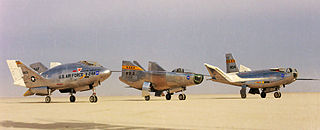
A lifting body is a fixed-wing aircraft or spacecraft configuration in which the body itself produces lift. In contrast to a flying wing, which is a wing with minimal or no conventional fuselage, a lifting body can be thought of as a fuselage with little or no conventional wing. Whereas a flying wing seeks to maximize cruise efficiency at subsonic speeds by eliminating non-lifting surfaces, lifting bodies generally minimize the drag and structure of a wing for subsonic, supersonic and hypersonic flight, or spacecraft re-entry. All of these flight regimes pose challenges for proper flight safety.

The NASA Neil A. Armstrong Flight Research Center (AFRC) is an aeronautical research center operated by NASA. Its primary campus is located inside Edwards Air Force Base in California and is considered NASA's premier site for aeronautical research. AFRC operates some of the most advanced aircraft in the world and is known for many aviation firsts, including critical support for the first crewed airplane to exceed the speed of sound in level flight with the Bell X-1, highest speed ever recorded by a crewed, powered aircraft, the first pure digital fly-by-wire aircraft, and many others. AFRC also operates a second site in Palmdale, Ca. known as Building 703, once the former Rockwell International/North American Aviation production facility, next to Air Force Plant 42. There, AFRC houses and operates several of NASA's Science Mission Directorate aircraft including SOFIA, a DC-8 Flying Laboratory, a Gulfstream C-20A UAVSAR and ER-2 High Altitude Platform. David McBride is currently the center's director.

The NASA X-43 was an experimental unmanned hypersonic aircraft with multiple planned scale variations meant to test various aspects of hypersonic flight. It was part of the X-plane series and specifically of NASA's Hyper-X program. It set several airspeed records for jet aircraft. The X-43 is the fastest jet-powered aircraft on record at approximately Mach 9.6.

The NASA Pathfinder and NASA Pathfinder Plus were the first two aircraft developed as part of an evolutionary series of solar- and fuel-cell-system-powered unmanned aerial vehicles. AeroVironment, Inc. developed the vehicles under NASA's Environmental Research Aircraft and Sensor Technology (ERAST) program. They were built to develop the technologies that would allow long-term, high-altitude aircraft to serve as atmospheric satellites, to perform atmospheric research tasks as well as serve as communications platforms. They were developed further into the NASA Centurion and NASA Helios aircraft.
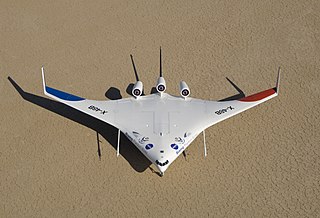
The Boeing X-48 is an American experimental unmanned aerial vehicle (UAV) built to investigate the characteristics of blended wing body (BWB) aircraft. Boeing designed the X-48 and two examples were built by Cranfield Aerospace in the UK. Boeing began flight testing the X-48B version for NASA in 2007. The X-48B was later modified into the X-48C version, which was flight tested from August 2012 to April 2013. Boeing and NASA plan to develop a larger BWB demonstrator.

The Scaled Composites Model 281 Proteus is a tandem-wing high-altitude long endurance aircraft designed by Burt Rutan to investigate the use of aircraft as high altitude telecommunications relays. The Proteus is a multi-mission vehicle able to carry various payloads on a ventral pylon. The Proteus has an extremely efficient design, and can orbit a point at over 19,800 m for more than 18 hours. It is currently owned by Northrop Grumman.

The Controlled Impact Demonstration was a joint project between NASA and the Federal Aviation Administration (FAA) that intentionally crashed a remotely controlled Boeing 720 aircraft to acquire data and test new technologies to aid passenger and crew survival. The crash required more than four years of preparation by NASA Ames Research Center, Langley Research Center, Dryden Flight Research Center, the FAA, and General Electric. After numerous test runs, the plane was crashed on December 1, 1984. The test went generally according to plan, and produced a spectacular fireball that required more than an hour to extinguish.

LASRE was NASA's Linear Aerospike SR-71 Experiment which took place at the Dryden Flight Research Center at Edwards Air Force Base, California, until November 1998. The experiment sought to provide flight data to help Lockheed Martin validate and tune the computational predictive tools used to determine the aerodynamic performance of the Lockheed Martin X-33 lifting body and linear aerospike engine combination and to lay groundwork for a future reusable launch vehicle.

The General Dynamics F-16XL is a derivative of the F-16 Fighting Falcon, with a cranked-arrow delta wing. It was originally conceived as a technology demonstrator, later entered in the United States Air Force's (USAF) Enhanced Tactical Fighter (ETF) competition but lost to the F-15E Strike Eagle. Several years after the prototypes were shelved, they were turned over to NASA for additional aeronautical research. Both aircraft are currently stored at Edwards AFB.

The NASA Shaped Sonic Boom Demonstration, also known as the Shaped Sonic Boom Experiment, was a two-year program that used a Northrop F-5E with a modified fuselage to demonstrate that the aircraft's shock wave, and accompanying sonic boom, can be shaped, and thereby reduced. The program was a joint effort between NASA's Langley Research Center, Dryden Flight Research Center at Edwards Air Force Base, California and Northrop Grumman.

The McDonnell Douglas F-15 STOL/MTD is a modified F-15 Eagle. Developed as a technology demonstrator, the F-15 STOL/MTD carried out research for studying the effects of thrust vectoring and enhanced maneuverability. The aircraft used for the project was pre-production TF-15A (F-15B) No. 1, the first two-seat F-15 Eagle built by McDonnell Douglas, the sixth F-15 off the assembly line, and was the oldest F-15 flying up to its retirement. It was also used as the avionics testbed for the F-15E Strike Eagle program. The plane was on loan to NASA from the United States Air Force.

The NASA AD-1 was both an aircraft and an associated flight test program conducted between 1979 and 1982 at the NASA Dryden Flight Research Center, Edwards California, which successfully demonstrated an aircraft wing that could be pivoted obliquely from zero to 60 degrees during flight.
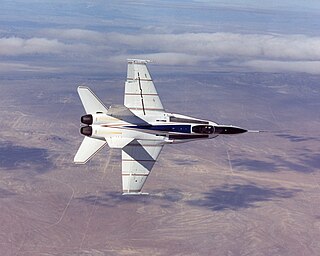
The X-53 Active Aeroelastic Wing (AAW) development program is a completed American research project that was undertaken jointly by the Air Force Research Laboratory (AFRL), Boeing Phantom Works and NASA's Dryden Flight Research Center, where the technology was flight tested on a modified McDonnell Douglas F/A-18 Hornet. Active Aeroelastic Wing Technology is a technology that integrates wing aerodynamics, controls, and structure to harness and control wing aeroelastic twist at high speeds and dynamic pressures. By using multiple leading and trailing edge controls like "aerodynamic tabs", subtle amounts of aeroelastic twist can be controlled to provide large amounts of wing control power, while minimizing maneuver air loads at high wing strain conditions or aerodynamic drag at low wing strain conditions. This program was the first full-scale proof of AAW technology.

The Environmental Research Aircraft and Sensor Technology, or ERAST program was a NASA program to develop cost-effective, slow-flying unmanned aerial vehicles (UAVs) that can perform long-duration science missions at altitudes above 60,000 feet. The project included a number of technology development programs conducted by the joint NASA-industry ERAST Alliance. The project was formally terminated in 2003.

The General Atomics Altus is an unmanned aerial vehicle, designed for scientific research, built by General Atomics Aeronautical Systems (GA-ASI).
The Gulfstream X-54 is a proposed research and demonstration aircraft, under development in the United States by Gulfstream Aerospace for NASA, that is planned for use in sonic boom and supersonic transport research.

The NASA Centurion was the third aircraft developed as part of an evolutionary series of solar- and fuel-cell-system-powered unmanned aerial vehicles. AeroVironment, Inc. developed the vehicles under NASA's Environmental Research Aircraft and Sensor Technology (ERAST) program. They were built to develop the technologies that would allow long-term, high-altitude aircraft to serve as atmospheric satellites, to perform atmospheric research tasks as well as serve as communications platforms. It was developed from the NASA Pathfinder Plus aircraft and was developed into the NASA Helios.
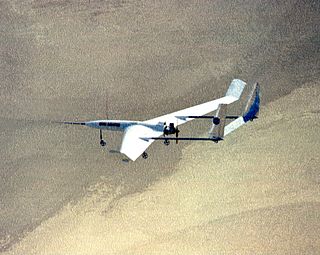
A Mars aircraft is a vehicle capable of sustaining powered flight in the atmosphere of Mars. So far, the Mars helicopter Ingenuity is the only object to ever fly on Mars, completing 28 successful flights covering 6.98 km (4.34 mi) in 54 minutes 16 seconds of flight time. It made the first powered flight on 19 April 2021, taking off from the surface. Previously, the experimental aircraft, NASA Mini-Sniffer, was considered for possible missions to fly in and study Mars' atmosphere, but that idea was abandoned. Aircraft may provide on site measurements of the atmosphere of Mars, as well as additional observations over extended areas. A long-term goal is to develop piloted Mars aircraft.
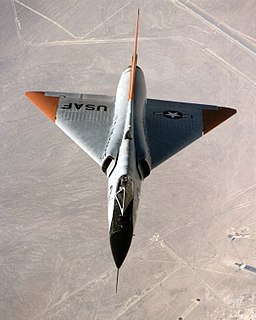
In 1997 and 1998 the Dryden Flight Research Center at Edwards Air Force Base, California, supported and hosted a Kelly Space & Technology, Inc. (KST) project Eclipse, which sought to demonstrate the feasibility of a reusable tow-launch vehicle concept. The objectives were: demonstration of towed takeoff, climb-out, and separation of the EXD-01 from the towing aircraft; validation of simulation models of the towed aircraft systems; and development of ground and flight procedures for towing and launching a delta-winged airplane configuration safely behind a transport-type aircraft.

















